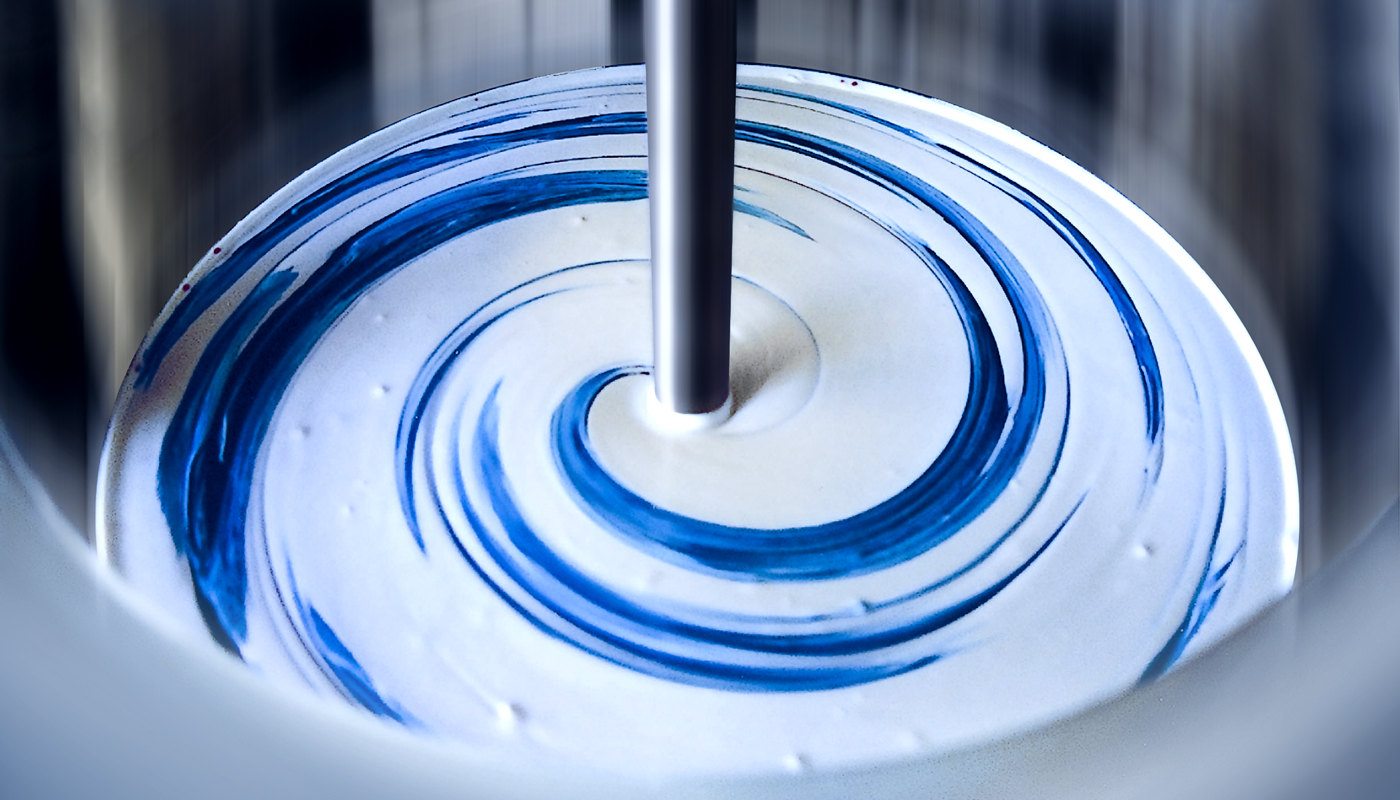
Mixing Tasks
The Key to the Optimum Mixing Solution
Blending/Homogeneity
The aim of every mixing process is to achieve the homogeneity required for the process in the entire contained volume. When homogenizing, it is important to reduce the differences in concentration and temperature that arise e.g. by product additions, mass transfers, chemical reactions or heat transfer. This mixing task occurs in single-phase and multi-phase systems.
In order to reduce energy consumption or increase productivity during homogenization, it is necessary to clarify whether the mixing time is a limiting factor. For low-viscosity liquids, the mixing time is in the order of minutes and therefore often not critical.
The situation is different with highly viscous media. Here, the rheology of the medium determines the mixing process. Here special, mostly wall-mounted agitation systems are required in order to achieve mixing times suitable for the process.
What is to be considered?
- Viscosity / rheology of the medium
- Geometry of the vessel
- Power input of the agitation system, especially with scale-up
Mixing Solids
When mixing solids, especially bulk materials, determining the mixing quality plays a central role. Knowledge of the statistical principles can be used to derive assistance for practical application, which ensures an effective procedure for determining the mixing quality. The scale-up of mixing times obtained on a laboratory scale to the production scale is also of great importance in this context.
What is to be considered?
- Grain/particle size distribution and crystal shape
- Moisture content and flow behavior
- Avoidance of contamination
Solid-Liquid Suspension
A suspension is understood to be a heterogeneous mixture of substances, which consists of a liquid and solids distributed in it. Suspending is the process of bringing these two substances together. A suspension agitator can be operated with different objectives. For example, for the dissolution of solids, the fluidization of the solid near the bottom can be sufficient, while in continuous processes, e.g. in crystallization or ore leaching, the highest demands are placed on the homogeneity of the suspension.
What is to be considered?
- Process requirement - suspend completely or homogeneously
- Difference in density fluid - solid
- Particle size of the solid
Liquid-Liquid Dispersion
Liquid-liquid dispersions are understood as mixtures of two or more liquids that are immiscible with one another. Such mixtures are made and used for many industrial applications. In the chemical industry, liquids are often mixed with one another temporarily for the targeted control of extractions or reactions. Long-term stable dispersions are also produced, for example in the pharmaceutical, cosmetic or food industries. Such long-term stable dispersions of liquids are referred to as emulsions.
What is to be considered?
- Process requirement - temporary or stable emulsion
- Density differences / interfacial tension of the liquid phases
- Energy input from the agitation system
Gas-Liquid Dispersion
The gassing of liquids is of high importance in the chemical and pharmaceutical industries and in biotechnology. The aim here is to achieve the highest possible mass transfer between the dispersed gas and the liquid. Stirred reactors with gassing systems are used for chemical syntheses such as hydrogenation or oxidation, as well as for fermentation.
What is to be considered?
- Increase in throughput and selectivity
- Same conversion rate at lower pressures and / or temperatures
- Savings in total cost of ownership
Drying
Drying is a basic process in process engineering. The thermal drying of moist solids is a combined process of heat and mass transfer with the aim of obtaining a dry final product by removing moisture. For the thermal drying of moist solids under vacuum, vertical devices with a mixer are ideal. When designing these dryers, the scale-up from laboratory to production scale in terms of drying time is of particular interest.
What is to be considered?
- Grain/particle size distribution and crystal shape
- Moisture content and flow behavior
- Avoidance of contamination
Heat Transfer
In many agitated processes, the heat transfer is one of the essential requirements that the stirring element must meet in conjunction with the vessel geometry and the cooling and heating elements. Typical tasks are e.g. to keep the product temperature constant during an exothermic or endothermic reaction or to set a certain product temperature by heating or cooling in a predetermined time.
What is to be considered?
- Viscosity/rheology of the medium to be heated or cooled
- Steady or unsteady process
- Available exchange area, especially for scale-up

